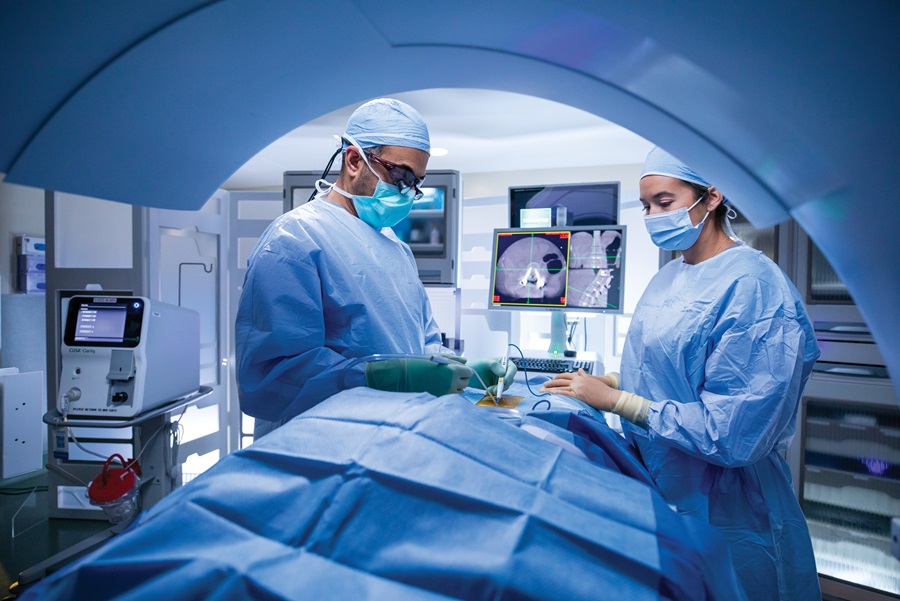An Introduction of Spine Conditions That Often Outcome in Surgical Therapies
Spinal column conditions such as herniated discs, back stenosis, and degenerative disc disease frequently require medical treatments when conservative treatments fall short to reduce persistent signs. Recognizing the nuances of each condition and the matching surgical options, such as discectomy or back combination, is essential for effective administration.
Herniated Discs
Although several individuals with herniated discs may discover alleviation via conservative treatments, surgical treatment ends up being a necessary consideration when signs persist or intensify - best spine surgeons in st louis mo. A herniated disc happens when the soft internal gel of a back disc sticks out through its outer layer, potentially compressing neighboring nerves and leading to discomfort, numbness, or weak point in the extremities
Conventional monitoring commonly consists of physical treatment, discomfort medicines, and corticosteroid shots, which aim to reduce swelling and boost function. Nonetheless, in instances where these methods stop working to alleviate debilitating signs and symptoms, medical choices may be explored.
One of the most typical surgery for herniated discs is a discectomy, which involves the elimination of the herniated section of the disc to eliminate pressure on the impacted nerve origin. In much more severe cases, spine fusion may be needed to support the affected vertebrae.
People are recommended to go over the prospective dangers and benefits of surgical procedure with their doctor to make an informed decision. Ultimately, the objective of any type of medical treatment is to recover feature, reduce discomfort, and enhance overall top quality of life for individuals dealing with herniated discs.
Back Stenosis
Back constriction takes place when the spaces within the back slim, causing raised stress on the spine cord and nerves. This problem can create in numerous areas of the spinal column, consisting of the lumbar and cervical areas, typically because of age-related modifications, such as degenerative disc condition, arthritis, or enlarging of ligaments.
Patients with spinal stenosis may present with signs and symptoms that consist of pain, feeling numb, tingling, or weak point, largely in the legs or arms. These signs and symptoms can be worsened by activities that entail standing or strolling, usually leading individuals to look for relief via traditional therapies like physical treatment, drugs, or epidural steroid injections.
Nonetheless, when these non-surgical treatments fall short to supply adequate alleviation, medical alternatives may be thought about. Usual medical treatments for spine stenosis include laminectomy, which involves the removal of component of the vertebra to minimize stress, and back blend, which stabilizes the affected location.
Spondylolisthesis
Spondylolisthesis takes place when one vertebra slips forward over an additional, bring about imbalance of the spine. This condition can arise from various factors, consisting of congenital issues, trauma, or degenerative modifications in the back. It is most frequently observed in the back region, particularly at the L4-L5 and L5-S1 levels.

Therapy choices vary based upon the extent of the slippage and the signs and symptoms presented. Conventional procedures, consisting of physical therapy, pain administration, and task alteration, are usually the first line of protection. When non-surgical techniques fail to ease signs and symptoms or when substantial nerve compression is existing, medical intervention might be required. Surgical choices can consist of spinal blend or decompression treatments, focused on recovering positioning and relieving neurological symptoms. Early diagnosis and appropriate monitoring are critical for optimal results in clients with spondylolisthesis.
Degenerative Disc Condition

The problem can be detected via a mix of medical assessment, imaging studies, and person history. When these techniques stop working to offer appropriate relief, surgical treatments might be taken into consideration.
Surgical choices for DDD may consist of back combination or fabricated disc substitute, aimed at supporting the affected segment and reducing discomfort (best spine surgeons in st louis mo). Ultimately, the option of treatment is individualized, taking into account the extent of the problem, patient wellness, and way of living aspects
Spinal Growths

Spinal tumors can develop from various aspects, consisting of genetic predisposition, ecological influences, and pre-existing medical problems. Individuals may present with an array of symptoms, including localized pain, neurological deficits, weakness, or modifications in digestive tract and bladder function, depending on the tumor's dimension and location.
Surgical intervention may be called for to alleviate symptoms, obtain a biopsy, or eliminate the lump completely. The goal of surgical procedure is commonly to unwind neural elements and maintain the spine. Early detection and intervention are vital for enhancing end results in clients with spinal lumps.
Final Thought
In recap, link spinal column conditions such as herniated discs, spine stenosis, spondylolisthesis, degenerative disc condition, and back tumors regularly necessitate surgical intervention because of their potential to cause significant pain and practical disability. While traditional treatments might provide short-lived relief, surgical alternatives end up being important when signs worsen or linger. Timely diagnosis and intervention play a vital role in restoring function and enhancing the quality of life for afflicted people, emphasizing the value of comprehensive spinal care.
